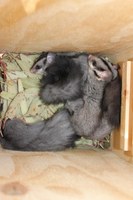Squirrel Glider Monitoring
Threatened species
Squirrel gliders are noctural, arboreal marsupials that are threatened due to loss and fragmentation of habitat, predation by foxes and cats and barbed wire fences. In areas of inland NSW and Victoria, glider populations are restricted to remnant patches of woodland or open forest, the majority of which has been extensively cleared for agriculture. Suitable habitat for squirrel gliders remains on travelling stock reserves, linear roadside habitats, private farmland and along watercourses. They are hollow-dependent, meaning they require large, mature or dead eucalypts for nesting and denning. They live in family groups and feed on insects, nectar and sap of banksias and acacias. Squirrel gliders primarily move throughout their home range by gliding from tree to tree. Gliding distance is generally between 20 and 40 metres but they have been recorded gliding up to 75 metres. If necessary, they will travel across open ground to reach a food resource, and this is when they are particularly vulnerable to foxes and cats.
This project aims to foster public awareness by involving landholders and the community in habitat improvement works by removing barbed wire, planting foraging shrubs and retaining old growth trees as well as future hollow-bearing trees (recruitment trees). To date, 99 nest boxes have been installed on 12 private properties, and monitoring has revealed squirrel glider use of 16 boxes. Remote cameras are also being used to monitor glider movements.





